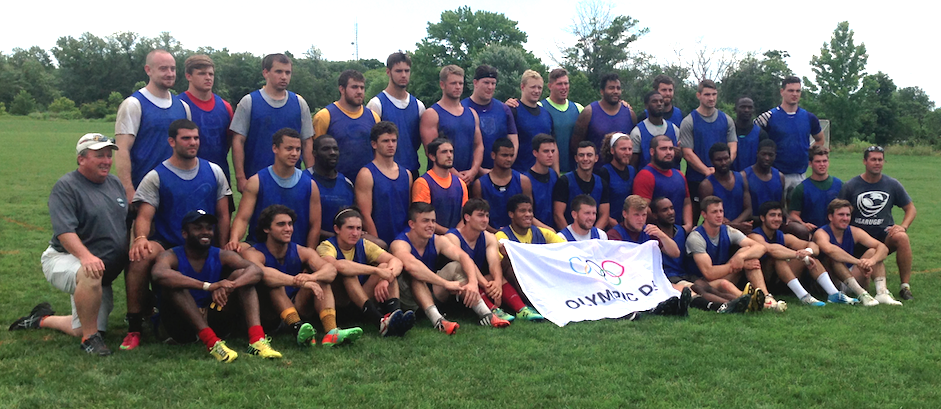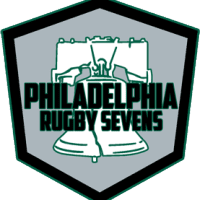
PHILADELPHIA, PA – USA Rugby is running a series of events they are calling National Tracking Camps (NTCs). The most recent was held in the Philadelphia area on Sunday in Alapocas State Run Park, Wilmington, DE. I was curious about what kind/how many athletes would turn up and how well the day would be run, so I went to check it out.

For USA Rugby, the day was billed as a Future Olympians and Future Eagles camp.
From the press release: “’The NTCs are the second step towards a national team cap,’ [Alex] Magleby said. ‘First and foremost, dominate the competition you’re in. Then set the standards alight at an NTC. National Training Squad inclusion comes quickly after that, including All-American and Elite City Sevens honors.’
“Male athletes wishing to try out for a national team, from the Junior All-Americans through to the senior Eagles teams in sevens and XVs, can apply to attend a USA Rugby National Tracking Camp. Though athletes are not required to possess prior rugby-playing experience, prospective attendees must be (or become) registered members of USA Rugby.”
The event was also a selection vehicle for the Philadelphia team of the Elite City 7s, so coach Chris Ryan was on hand keeping a close eye on things and Joe Grohovsky, the team manager, handled logistics.
The Philly-area camp was the eighth of nine camps being held this year.
Close to 50 young men participated in the camp. Most were college-aged, though a few were older. The 2015-2016 Junior All Americans (players born in 1996 and 1997) was the youngest side players could be auditioning for at the camp.
The day started with basic physical information, like vertical leap and sprint times, and then moved on toward rugby-specific drills. In the middle was a yo-yo fitness test.
Andrew Locke led the camp for USA Rugby and explained the scoring for the drills. All players are rated on a 4-point scale: a 4 means that the player could or should be playing international rugby; a 3 means that the player is above average and good enough for representative rugby; a 2 is a solid club player; a 1 is below average. Players were given a score for each of 4 drills, and they were also given an overall score.
The 4 drills were a ruck-support drill, an evasive running drill, a track-tackling drill, and a passing drill.
At the start of the drills, both players and the local coaches running the drills were working out precisely how the drills worked.
Locke indicated that USA Rugby is collecting footage from this year’s NTCs so that the expectations that are currently clear to coaching staff of USA Rugby are clear to all through video examples. Prior to a camp’s start, Locke can share with the local coaches film of what the drills are supposed to look like, with examples of actual players and their scores. This kind of clarity and consistency will go a long way to making the numbers on the 4-point scale meaningful on a national level.
To successfully run a camp like this well, good local coaches who understand what is expected of them and the players are essential.
After the drills, there was position-specific work. This meant that halfbacks, wings, and fullbacks kicked and received kicks; centers did more passing, but with defenders as part of the drill this time; forwards worked on “scrum profiles.” There was no scrum sled or other equipment available.

Eli Phillips and his dad drove up from Alabama for the camp. Phillips plays for the University of Northern Alabama and is interested in moving to the next level. As a prop, much of the camp did not fully evaluate his potential strengths as a player.
The day ended with some scrimmaging, though without set pieces or kicking.
The players brought a mix of expectations and aspirations. There certainly seemed to be more backs at the camp than forwards. This is a natural consequence of the exposure of the men’s national sevens team and the use of the camp as a selection vehicle for the Elite City 7s.
Mo Mascary was there with the goal of breaking into the men’s national sevens team. He’d contacted Alex Magelby who asked him to send in a highlight tape and then sent an email with a link to register for the camp. Mascary has been playing rugby for a year, and before that was a football and track athlete. If nothing else, a camp like this gives a guy who isn’t on the radar a specific way to get attention. Certainly, during the evasive running drill, Mascary stood out in his group.
The camp also gives a player like attendee Chris Kunkel, who was the MVP at the DII Men’s 7s Championship with James Madison University this spring, a chance to stay on the radar. One of the possible uses for these camps is for players to show selectors – of whatever team – that they are fit and serious about their rugby.
Some players either had little rugby experience or had been poorly coached. No one at the camp, though, showed up with no rugby experience. The day itself is not going to make players better. However, the creation of clear standards will contribute to a larger environment that helps players and coaches be better.
There is still lots of room to improve on the idea of National Tracking Camps. One might think, for instance, that USA Rugby would want to put a priority on finding and developing athletes at the position of prop. Sunday’s camp is limited in its usefulness to that end.
Locke’s awareness of the camp’s limitations and of how to improve the consistency and value of the evaluations seems a good sign. Hopefully, the NTCs will continue next year and beyond. The idea has promise, and I look to seeing how the camps evolve and, hopefully, improve.
Feel free to comment below, look for and “Like” our Facebook Rugby Wrap Up Page and follow us on Twitter@: RugbyWrapUp, Junoir Blaber, James Harrington, Jamie Wall, Nick Hall, DJ Eberle, Jake Frechette, Scheenagh Harrington, Jamie Loyd, Cody Kuxmann, Karen Ritter, Audrey Youn, Akweley Okine, Rocky Brown and Declan Yeats, respectively.

